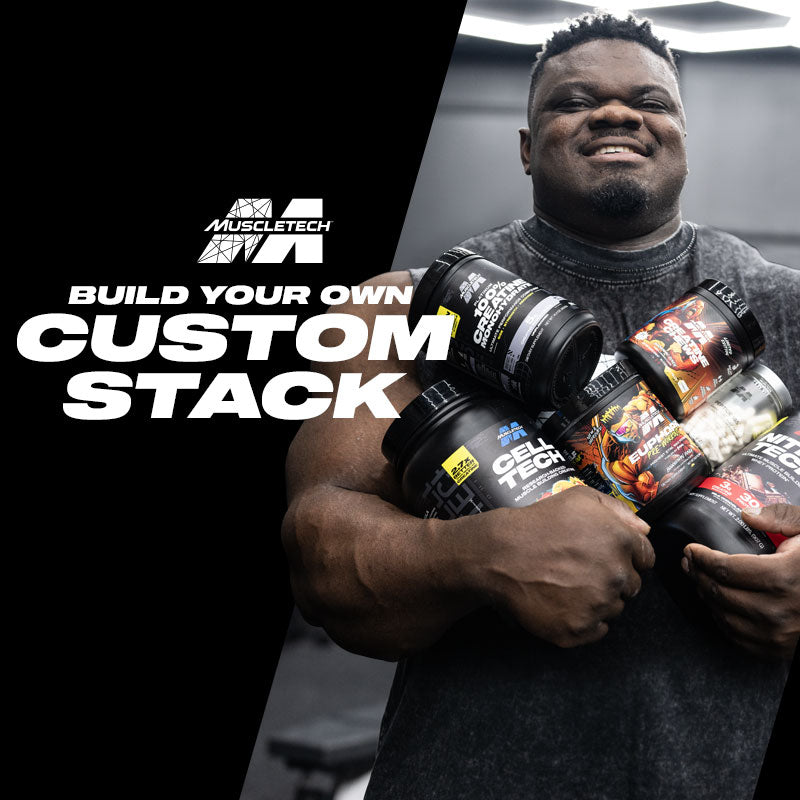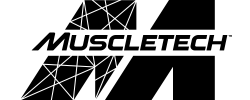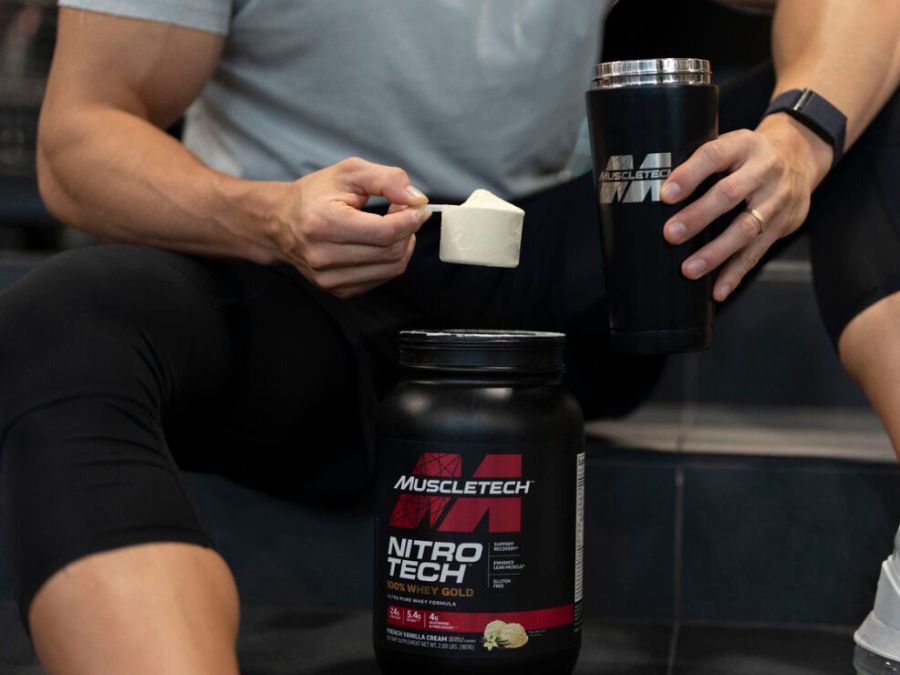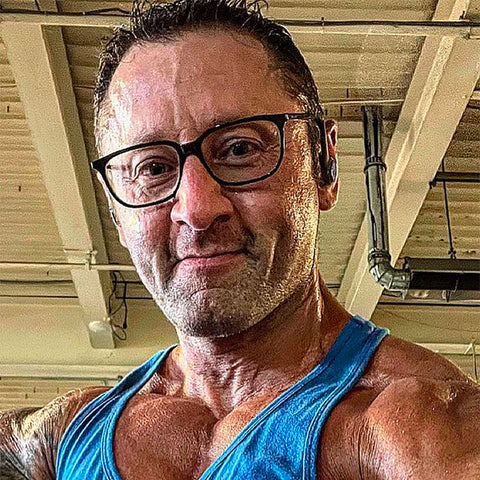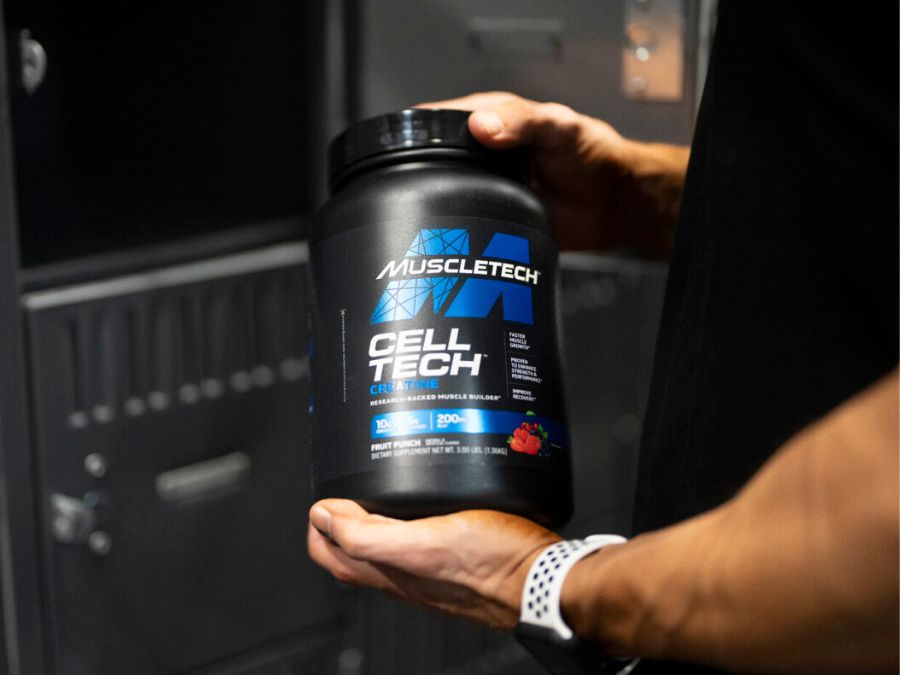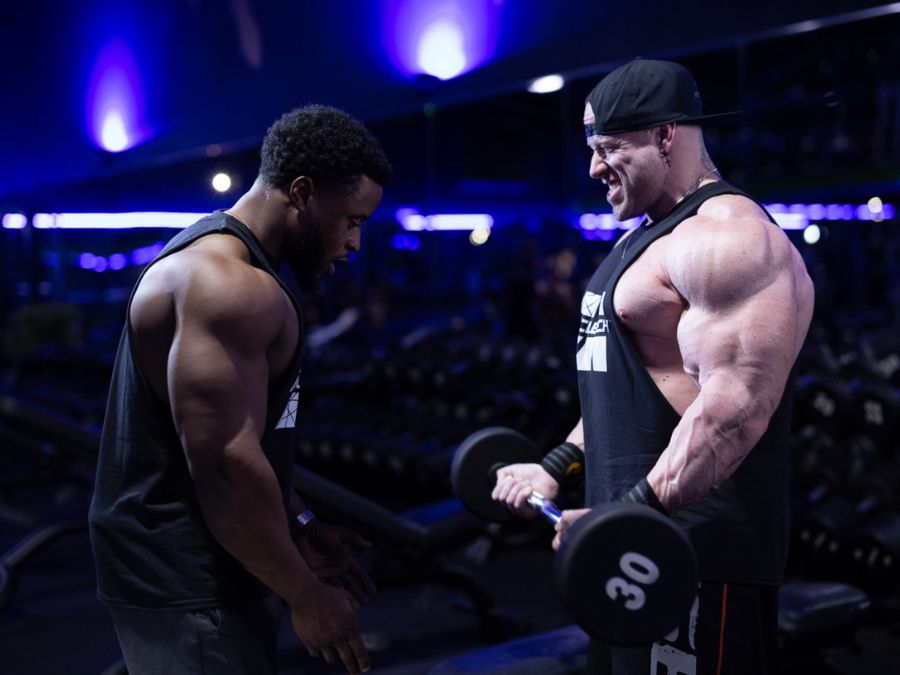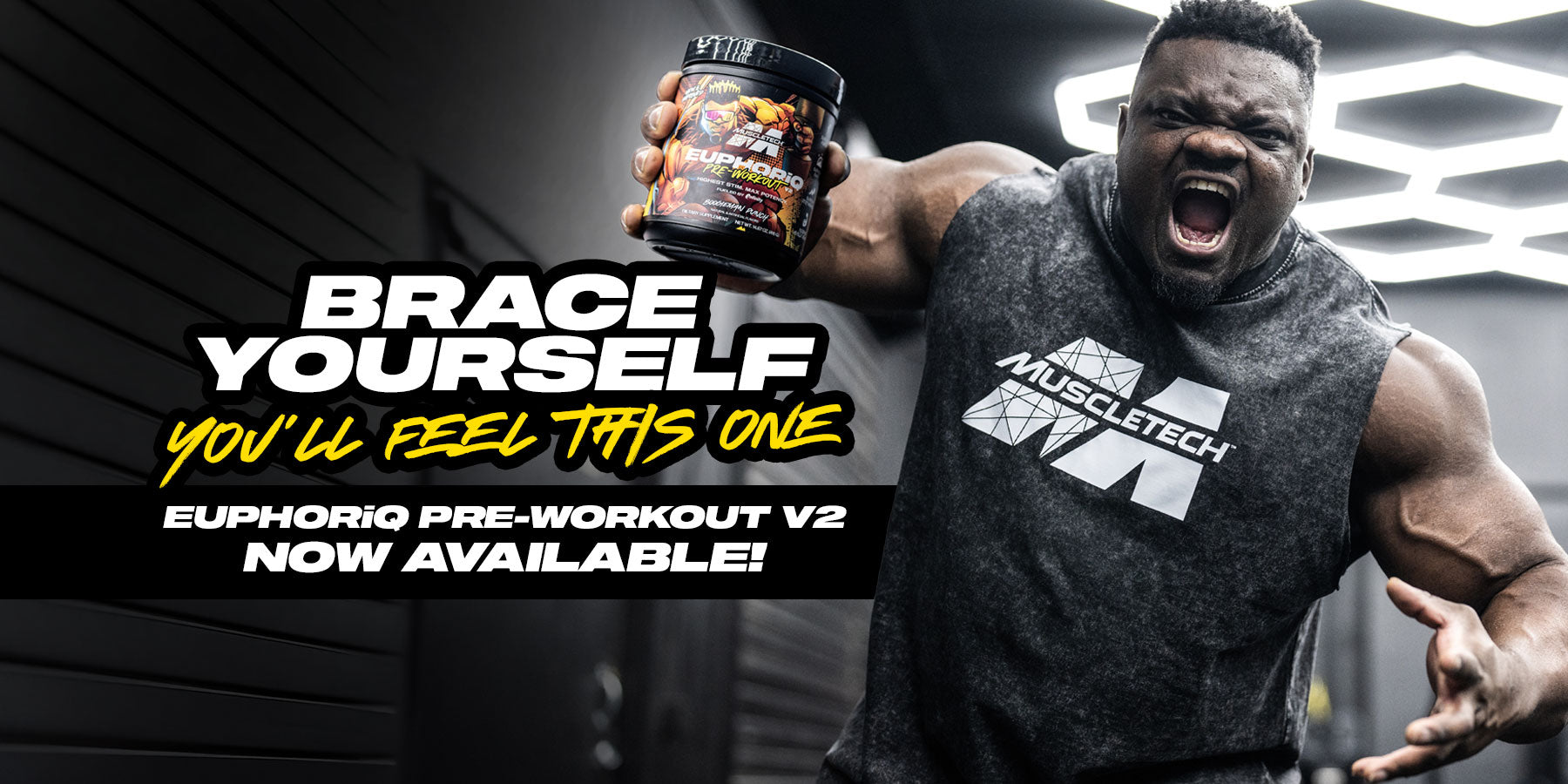By Ron Harris
There is a picture of me from shortly after graduating high school in 1987 where I am outside and have a very clear six-pack without flexing my abs. I was 17 years old and about 135 pounds.
I did no cardio, ate a diet rife with fast food and junk food and was fond at the time of cheap 2-liter bottles of wine coolers.
Supplements? Cardio?
I don’t think I had even heard that term yet in my life, much less done any aside from wrestling practices the previous winter. I was a growing young man with a metabolism like a racehorse.
As I write this well over 30 years later at the age of 53, things have changed drastically. If I did zero cardio and ate the way I did in my carefree youth, I’d have a gut so big I wouldn’t be able to see my feet and I bet my body fat would be 25% at the very least.
Many of you are in a similar position now that you’ve crossed over into middle age. The days of playing fast and loose with your diet are over.
Here’s how to build and follow a diet that will optimize your testosterone, get you lean, and keep your size and strength as you get older.
Shop & Save on Premium Protein Supplements
1. Forget about ‘bulking’
Ever heard of the bulking season? ‘Bulking up’ has been a bodybuilding practice for the better part of a century now. The idea is to take in as many calories as possible while lifting heavier with the goal of gaining more bodyweight and muscle mass.
When eating in a massive caloric surplus, a substantial portion of the weight gained will be in the form of body fat. This was never a cause for concern, as bodybuilders have always known how to manipulate their diet and activity levels in order to lose that unwanted blubber when the time comes to get lean and mean.
Read: Building Muscle After 40: A Comprehensive Guide
I subscribed to this strategy throughout my twenties, thirties, and even a couple years into my forties before I put an end to the madness. As we get older, bulking isn’t just a bad strategy, it’s hazardous to our health.
Additional body fat puts extra stress on all the organs and being obese puts you at greater risk for heart disease and stroke, type 2 diabetes, osteoarthritis, and several types of cancer, and that list is far from complete.
I would hope that was enough to ward you off from bulking, but if your health isn’t a primary concern, how about looking and feeling awful?
I know I cringe when I see photos of myself back when my winters were spent between 235-245 pounds. Not only did I look bloated, I would get winded going up a small flight of stairs and my head felt like it would explode when I bent over to tie my shoes (that was high blood pressure).
A final compelling reason to maintain a more respectable bodyfat level as we age is that all our metabolisms slow down in middle age. The excess fat we accumulate now takes far longer to get rid of than it once did and will require a far stricter diet and more cardio to shed.
Also Read: The Perfect Bodybuilding Diet Plan
When that reality eventually dawned on me, I finally realized the futility of ‘bulking up’ and gaining unnecessary weight. Learn from my impetuousness and forget about bulking up.
If you can’t see even a blurry outline of your abdominals and some muscle separation, you have allowed yourself to get too fat and need to clean up your diet, cut some calories, and increase your activity levels.
Buy Weight Management Supplements at Discounted Prices
2. You don’t need cheat meals or cheat days
Another practice all of us older, er I mean mature trainers need to abandon is cheat meals. I’m not saying you can’t ever enjoy something you’ve been craving or looking forward to, only that it shouldn’t be a regular occurrence.
I know people who will eat clean meals like chicken breast and brown rice most of the day, then go crazy with a whole meat-lover’s pizza or tub of Ben and Jerry’s at night basically to reward themselves for eating healthy foods all day.
Eating clean is its own reward! Unless you are someone who is still naturally very lean at age 40 or 50 or even older, cheat meals can and will put you well over your caloric needs for the day and that surplus will wind up as – ding ding!
Bodyfat.
Some people take it a few steps further and will set aside entire cheat days, typically on a Saturday or Sunday, and again they feel entitled to be a glutton for a full day and night if they ate well all week before this.
Most of us can do a lot of damage in that time. As I noted, cheat meals should be considered on a case-by-case basis. If you are carrying substantially more bodyfat than you should or want to, hold off on any cheat meals and stick to clean, healthy meals.
3. CICO: Calories in vs. calories out
When meta-studies have analyzed the effectiveness or lack thereof among dozens of popular weight-loss plans and diets, they found that they all worked – that is, if they put you into a caloric deficit.
Weight loss boils down to a mathematical formula anyone can comprehend. If you expend more calories than you take in, you will lose weight. If you take in more calories than you expend, you will gain weight. It’s all just calories in versus calories out!
Theoretically, it wouldn’t even matter what form those calories came in. If your BMR, or Basal Metabolic Rate (the rate at which the body uses energy while at rest to keep vital functions going, such as breathing and keeping warm) is 1,500 calories and you also tend to burn about 500 calories per day through activities, you would need to eat fewer than 2,000 calories daily to lose weight.
That could be in the form of junk like chocolate and donuts, or fresh chicken, eggs, fish, rice, potatoes, fruits, and vegetables. You would be able to eat a much greater volume of the healthier foods to stay in those parameters, whereas a few slices of pizza and a chocolate bar would be all you would get daily if you opted for the junk instead.
There are a wide variety of apps you can download to your smartphone to track your daily calories, and the only extra effort beyond that would be weighing and measuring your portion sizes for accuracy.
If you do that, you will always be able to adjust your calories up or down as needed to reflect your goals, whether they be gaining muscle or losing fat.
Creatine on SALE [Free Shipping]
4. Eat carbohydrates as needed
Most of us simply don’t need as many calories in middle age as we did as kids. Assuming you’re eating clean, and your calories are still over the amount they need to be for maintenance, where do you cut back from?
Protein should always be in the range of a gram to a gram and a half per pound of bodyweight daily, and you also should be eating healthy fats from sources like almonds, avocado, salmon, and egg yolks.
That leaves carbohydrates as the macronutrient best suited for manipulation. As teenagers, some of us could put down 3-4 giant bowls of pasta and a loaf of bread every day and still not gain any weight.
At age 40 or 50, no one aside from an elite endurance athlete could possibly need all those carbs. Even those of us who train seriously with weights and do our share of cardio don’t need an abundance of carbohydrates.
Many find that they maintain their best body composition when eating carbs only around their workouts, as in the meal before and the meal after.
All other meals feature a protein source and vegetables instead of a starchy carb like rice, potatoes, sweet potatoes, or oatmeal. This is usually enough to fuel a solid workout and then to replenish spent muscle glycogen stores.
Most people do need some carbs with breakfast, so if you don’t train after that first meal of the day, you would likely be best served with three moderate servings of carbohydrates a day. The portion sizes can and should be adjusted to your particular caloric needs.
5. Avoid white flour and sugar
While the glycemic index is only 100 percent relevant if specific foods are eaten in isolation rather than with others foods, you should still severely limit insulin-spiking items like white bread and fruit juice.
Insulin is the body’s storage hormone, and keeping it stable is key to avoiding fat gain.
Buy Pre-Workout to Get the Best of Your Workouts
6. Food prepping: the ‘secret’ to successful nutrition
By no means would I suggest to all of you that you must eat like a competitive bodybuilder, but there is one strategy you should take from their nutrition methods: food prepping.
The best way to ensure you always have the right foods to eat at the times you need them is to cook in mass quantities. You can cook multiple servings of chicken, turkey, lean beef, and fish on a grill, an oven, or in a crockpot along with carbs like rice and potatoes and freeze most of it to eat later in the week.
Some people prefer to portion out individual meals containing both protein and carbs to freeze so they are ready to eat later. If you don’t have a membership to a wholesale warehouse like Costco or BJ’s, I strongly suggest you get one so you can buy your meat, fish, and poultry in bulk at a great price.
You can season these however you like, or use low-calorie marinades and sauces to make your meals tastier. But being prepared is half the battle when it comes to staying on a clean, healthy diet. If you’re always looking for something to eat, you will tend to make bad choices out of convenience or desperation.
There is a world of nutritional difference between a freshly grilled chicken breast and a 12-pack of Chicken McNuggets! Set aside a time or times every week where you can prepare your meals for the next 5-10 days, and you will never have an excuse for eating things you know you shouldn’t be eating.
Shop & Save on Testosterone Supplements
7. Ditch the alcohol!
I have known more than a few people who sabotaged an otherwise clean diet by drinking regularly. We went over the need to avoid being in a caloric surplus, and booze can do that quite easily. Take a look at a random sample of the caloric content of a few adult beverages:
Beer, 12oz regular 153
Light beer, 12 oz 103
Vodka tonic 189
Pinot grigio, 5oz 128
Pina Colada 526
White Russian 568
Vodka, 1.5 oz shot 116
Rum and Coke 185
Margarita 168
Mai Tai 306
Beer and wine look innocent enough until you realize that most of us don’t drink just one serving at a sitting.
The worst offenders in terms of calories tend to be the ‘fruity’ drinks often served with an umbrella. People often complain about having gained 10 or more pounds while on a cruise or vacationing at an all-inclusive resort, and they blame it on the buffets.
They usually fail to recognize how much alcohol they were guzzling sitting by the pool or kicked back on a lounge chair on the beach. There’s also a reason we have the phrase ‘beer belly.’
I won’t even touch on the health risks associated with alcohol, particularly to your liver, but from a vanity standpoint, alcohol can easily contribute to your being fatter than you would like to be.
I will leave you with a sample diet to follow, though you can substitute similar healthy foods of your preference. Nutrition takes on a more important role as we age. Take the time and make the effort to eat as well as you can to support optimal health and performance, and you can be the very best version of yourself no matter what age your driver’s license says you are!
Sample diet
- Meal 1
10 egg whites, ½ cup (dry) rolled oats with ¼ cup blueberries or strawberries
- Meal 2
8 oz. chicken breast, 6-8 grilled asparagus stalks
- Meal 3
8 oz. salmon, large green salad or 1 cup steamed broccoli
- Meal 4 (pre-workout)
8 oz ground turkey (1 tbsp salsa okay to mix in), medium sweet potato
Post-workout shake
50 grams whey protein
- Meal 5 (post-workout)
8 oz white fish, 1 cup (cooked) white rice
*Assuming late afternoon/early evening workouts
Are you ready to jump on the fitness spree at 40?
Buy Best Bodybuilding Supplements for Quicker Results
Read More Blogs:
